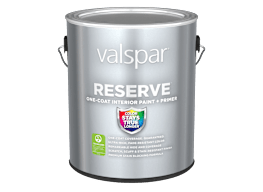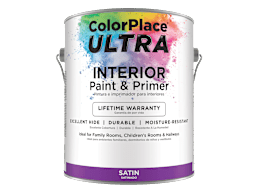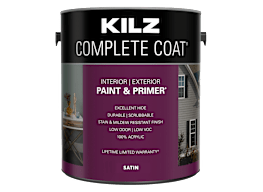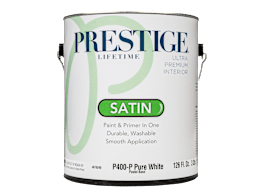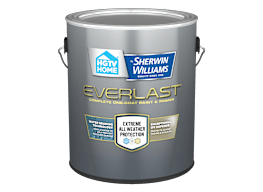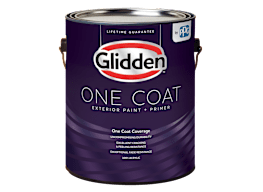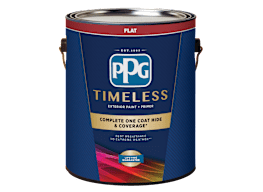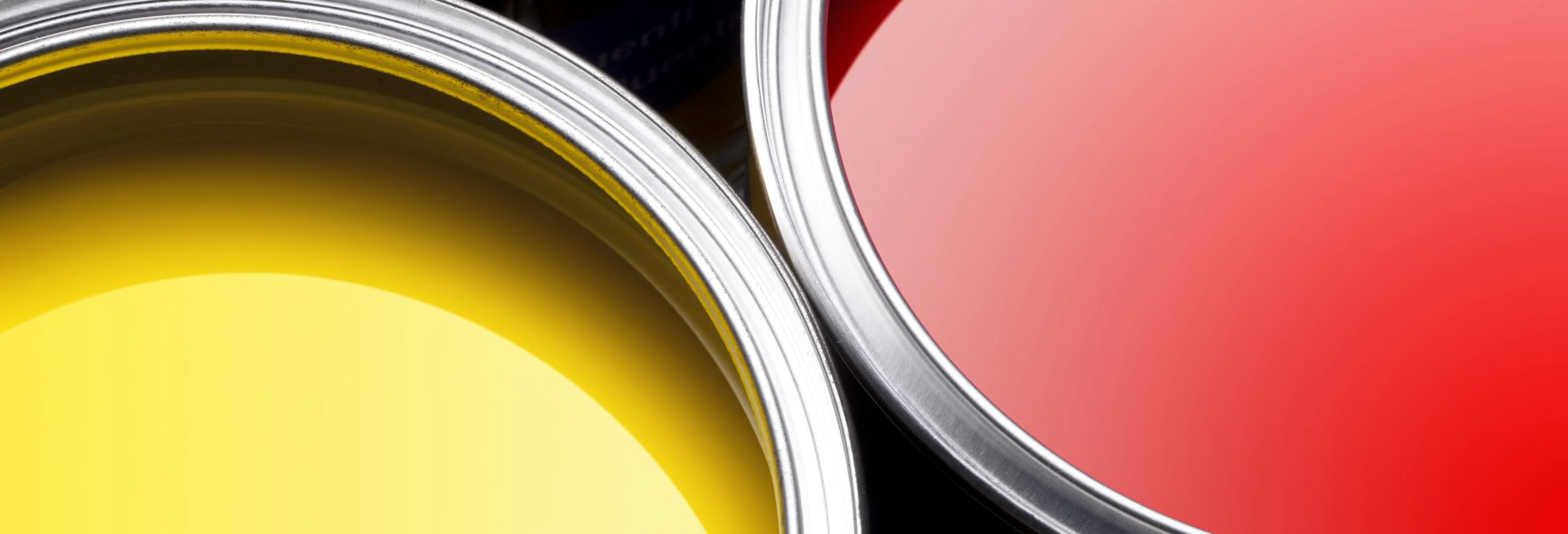
Interior & Exterior Paint Buying Guide
Buying a can of paint should be an easy task. But walk into any home center or paint store and you can easily get confused and overwhelmed by the number of choices on the shelves. Brand lines keep expanding, which is great, but when prices jump by $5 to $20 per gallon, it can leave you wondering: Which paints deliver? And are the more affordable options just as efficient?
The good news is that the perfect paint for your needs is out there, and CR can help lead you to it. We test dozens of interior and exterior paints in a variety of finishes to help you find the best one for the job and your budget.
If an exterior paint project is on your to-do list this spring, take heed to this important pro tip: Make sure that outdoor temperatures are at least 50° F when applying the paint and that they don’t drop below 32° F at night. When the temperature dips, it can cause dew to form on the paint, making it harder for the paint to dry the way it should. That could make the paint susceptible to cracking and affect how long the paint lasts. While you’re painting, it’s also best to make sure there’s little to no wind so that you don’t mess up your paint job.
Choose Your Sheen and Color
Choosing a color is where some folks start. Color-matching systems have improved to the point where you can get close to the exact color you crave in just about any brand. The sheen can vary, however, and that can affect your perception of color. So decide which sheen is needed for the job (pros and cons are spelled out below), find a color you love, and then choose the best paint for your budget. Fun fact: Despite all the colors available, whites and off-whites remain the top-selling interior colors. With dozens to choose from, zeroing in on just the right white can be tricky.
Look at the biggest paint chips the store offers. A store’s lighting affects your take, so step outside to get another look in natural light. Once home, place the chips on the wall, next to the trim, and look at them at different times throughout the day as the natural light changes. Do this over the course of several days, removing colors that aren’t working. Keep in mind that indoors, color tends to intensify over large areas, so it’s generally better to go too light than too dark in a given shade.
Once you’ve narrowed your choices, buy small containers for testing. Paint sample colors on large sheets of heavy paper so that you can move them from place to place without having to paint the walls. Live with them for at least a few days. Throughout the day, observe the effects of changing light on the color, both natural light and light provided by bulbs.
For exteriors, warm, neutral palettes continue to be widely used because the brick, stone, and other fixed elements are warm materials. That said, as blues and grays became popular colors for a home’s interior, they’re popping up on exteriors, too. And it’s smart to take a cue from other homes in the neighborhood, although you don’t want a color that’s too close to the homes next door.
Paint sample boards with each color you’re considering, and place them on different corners of your home. Again, observe the color at different times of day as the natural light changes. Once you’ve narrowed your choices, paint a swatch on the front of your house where it’s in full sun—not on the porch or under an overhang, where there are shadows. Look at the color at different times of the day.
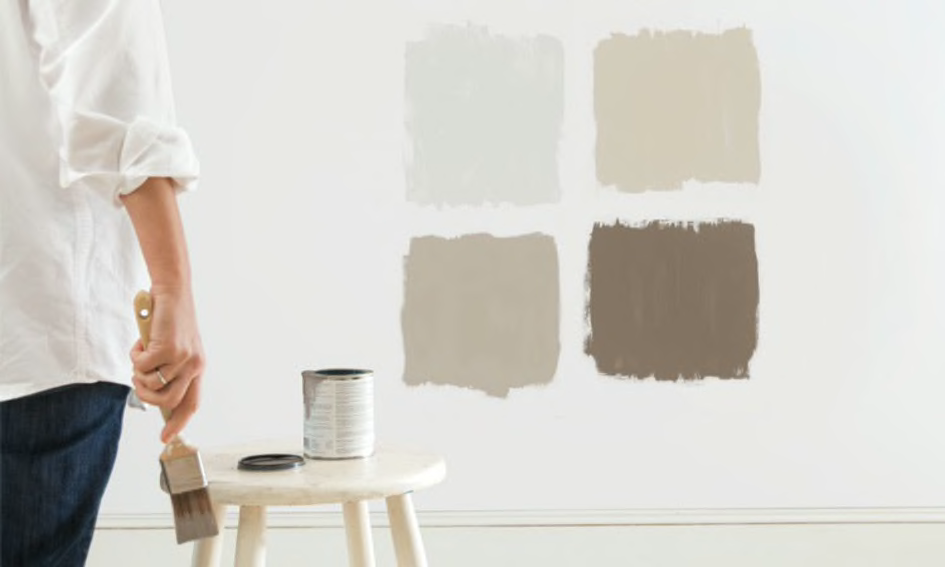
Pick Your Paint
You can choose the most beautiful shade, but if the paint is mediocre, the end result is likely to disappoint. Our tests find that economy grades of interior paint don’t perform well overall, and you may need to apply three or four coats to cover dark colors. Paints earning a Very Good or Excellent rating in our hiding test cover most colors in one coat. The vast majority of the tested paints claim to eliminate priming.
Exterior paints have improved dramatically in recent years. As a group, they’re more durable and less prone to cracking and fading. But there are still real differences among the tested paints in our ratings, and many manufacturers claim that you won’t have to apply a primer first.
In response to stricter federal and regional standards, manufacturers have reduced the levels of volatile organic compounds—some of the noxious chemicals that can make paint smell like paint—in their products. Earlier low-VOC paints lacked the durability of higher-VOC finishes, but now all the paints in our tests are claimed to have low or no VOCs, and many perform very well.
For more on paint, see:
5 Secrets to Great Paint Preparation
When to Call a Painting Contractor
How Long Does Leftover Paint Last?
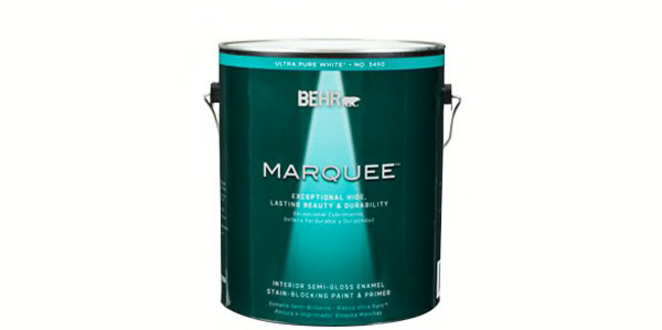
Interior Paint
Our interior paint ratings tell you how well a paint hides what’s underneath it, how smooth the finish will be, and whether the paint resists stains, scrubbing, gloss change, sticking, mildew, and fading.
Because a brand’s flat, eggshell, and semi-gloss formulations perform similarly overall, we’ve combined the scores into one to make it easier for you to choose.
Flat: These finishes hide imperfections well but are the least stain-resistant and are better suited for low-traffic areas.
Eggshell and satin: Use only on fairly smooth, well-prepared surfaces because their shine can accentuate imperfections on the walls. These paints are tough enough to be used in family rooms, kids’ rooms, and hallways. Some might change sheen when scrubbed.
Semi-gloss: Shinier still, these paints are formulated to stand up to stains. They’re generally the easiest to clean, but some may tend to dull when scrubbed. They’re ideal for kitchen and bathroom walls, windowsills, and other woodwork. Semi-gloss paints require a very smooth, well-prepared surface with few imperfections.

Exterior Paint
Our exterior paint ratings indicate which paints are likely to last the longest on your home. We rate how a paint resists cracking, color change, dirt, and mildew.
Like interior paints, exterior paints come in a variety of sheens, but we’ve combined scores of the various exterior-paint sheens into one score to make it easier for you to decide. Here are the types to consider:
Flat: This dullest of finishes is the best choice if you need to mask imperfections. Flat finishes look best on exterior walls, especially those that are older and more weather-worn.
Eggshell and satin: These finishes have a slight gloss and can also work well on walls, especially those that are newer and smoother.
Semi-gloss and gloss: Most often used for trim because they highlight the details of the woodwork and are easy to clean.
Paint Brands
Behr is a leading brand of water- and oil-based interior and exterior paints and primers, and is available exclusively at Home Depot. In addition to paint, Behr offers primers; specialty finishes, such as Venetian plaster; masonry waterproofers; wood-flooring coatings; and cleaners. Behr is a part of Masterchem, which also makes the Kilz brand of primers and paints.
Benjamin Moore is part of the Berkshire Hathaway portfolio of companies owned by Warren Buffett. Benjamin Moore has positioned itself as an aspirational paint brand, particularly since breaking through the top tier with the introduction of Aura. The company has a network of 4,000 independent dealers that carry the brand and has said that training and service are the key reasons it hasn’t entered the home-center channel. Benjamin Moore also operates more than 1,200 Benjamin Moore paint stores across the country.
Glidden is a widely sold brand of paint available through Home Depot and independent hardware and paint specialty stores.
Sherwin-Williams is the largest producer of paints in the U.S. and includes Pratt & Lambert and Thompson Minwax among its brands. Sherwin-Williams manufactures water- and oil-based interior and exterior paints and primers, and sells them through more than 3,000 company-owned retail stores. In addition to paints, Sherwin-Williams offers primers, faux finishes, interior wood stains, and wallpaper. Its retail stores cater to professionals and consumers, and offer a variety of paint supplies and tools.

















